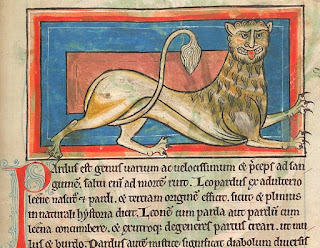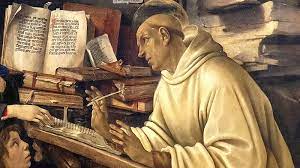When Edward's son, Edward Caernarvon, was young, he, too, chose to oppose his father, angering the king so that he refused to speak to his son, "exiling" him away from home (but not far). Here is what happened.
The young Edward had accompanied his father on military campaigns, even negotiating with Scottish leaders on the king's behalf. When his mother died and his father re-married (to Margaret, the sister of King {Philip[p IV of France), the young man got along with his stepmother and his two half-brothers that the king had with her. (Later, as king, he even gave them titles and financial support.)
But he was profligate in his ways. Even when he was made Prince of Wales in 1301 (shown in the illustration) and granted the earldom of Chester, giving him his own source of income through taxation, he spent too lavishly. He was criticized as being too much addicted to gambling, especially "pitch and toss" (which we now call "pitching pennies," in which players toss coins at a mark; the one whose coin lands nearest the mark wins all the coins). He was also criticized for sleeping late and keeping the company of harlots (curious, considering later accusations about his behavior with his close friend, Piers Gaveston).
The prince clashed with one of his father's closest fiends and royal treasurer, Bishop Walter Langton, over his financial support. The king sided with his treasurer (he later made Langton executor of his will), and the details of the clash were so serious that the prince and his companions were banished from the court and orders were given (on 14 June 1305) to the Exchequer to refuse any requests for funds by the prince. The precise nature of the clash with Langton is unconfirmed. One record states that the prince had trespassed on lands owned by the bishop and hunted deer; when found out, he abused and insulted Langton.
Would just an insult be enough for what turned into a six-month banishment and financial deprivation? It is possible: Sir William de Braose just a few months later was accused of "contumelious words" against royal judges during a court case, and was given a sentence that was said to be "similar to the king's son." So possibly King Edward and the courts took a very dim view of verbal assaults. There are also—and no one who has learned anything about Edward II would be surprised—hints that the original trespass involved the prince's companion, Piers Gaveston.
Was Gaveston such a bad influence that his presence would make things worse? If he were in the prince's household, he must be a person himself of some standing. Let's take a look at Piers Gaveston next time, and try to separate fact from fiction.


























